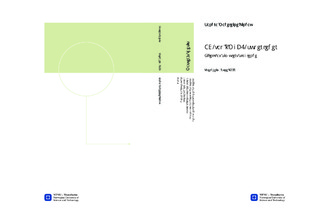AC-tap i MgB2-superleder: Effekt av simulert slaglende
Master thesis
Permanent lenke
http://hdl.handle.net/11250/257486Utgivelsesdato
2013Metadata
Vis full innførselSamlinger
- Institutt for elkraftteknikk [2465]
Sammendrag
Superconductive materials can conduct DC currents without energy losses when cooled down below their critical temperature. However, under AC conditions, energy losses appear in the superconductor. In 2001 the new and inexpensive superconductor MgB2 entered the market. Currently this conductor is used in DC applications such as MRI, but before implementing the use of MgB2 in AC applications more research has to be carried out. The basic questions are how large are the AC losses, in what way do they depend on magnetic field, current and temperature, and can they be reduced to a level acceptable for commercial use?This Master?s thesis is a part of a larger work at NTNU/SINTEF. In earlier projects calorimetric AC loss measurements have been performed on an MgB2 round wire and tape, and there have been performed critical currents on the MgB2 tape.The aim for the Master?s thesis was to find the relationship between the twist pitch and the losses of a multifilamentary wire. Calorimetric AC loss measurements have been performed on seven different lengths, from 3 mm to 50 mm, of the round multifilamentary MgB2 wire. These measurements have been performed by applying AC magnetic fields from 40 mT to 210 mT with a frequency between 15 Hz to 260 Hz at three different temperatures.At 50 Hz, 100 mT and 35 K the AC losses reduces by a factor of 6 by reducing the sample length of 12 mm, 29 mm or 50 mm to 3 mm. From theoretical calculations, it is believed that by reducing the twist pitch of a long sample from 24 mm to 6 mm the benefit from twisting will be at a maximum.
